Tallinn is the smallest of the Baltic capitals, but what it lacks in size, the city makes up for in creativity and charm. Tallinn is a real metropolis for fans of the history of the Baltic States as well as for friends of modern architecture. The Old Town, which is a UNESCO World Heritage Site, could not be more picturesque and has captivated many conquerors. Reason enough to present you the most beautiful Tallinn sights and help you plan your Tallinn city trip.
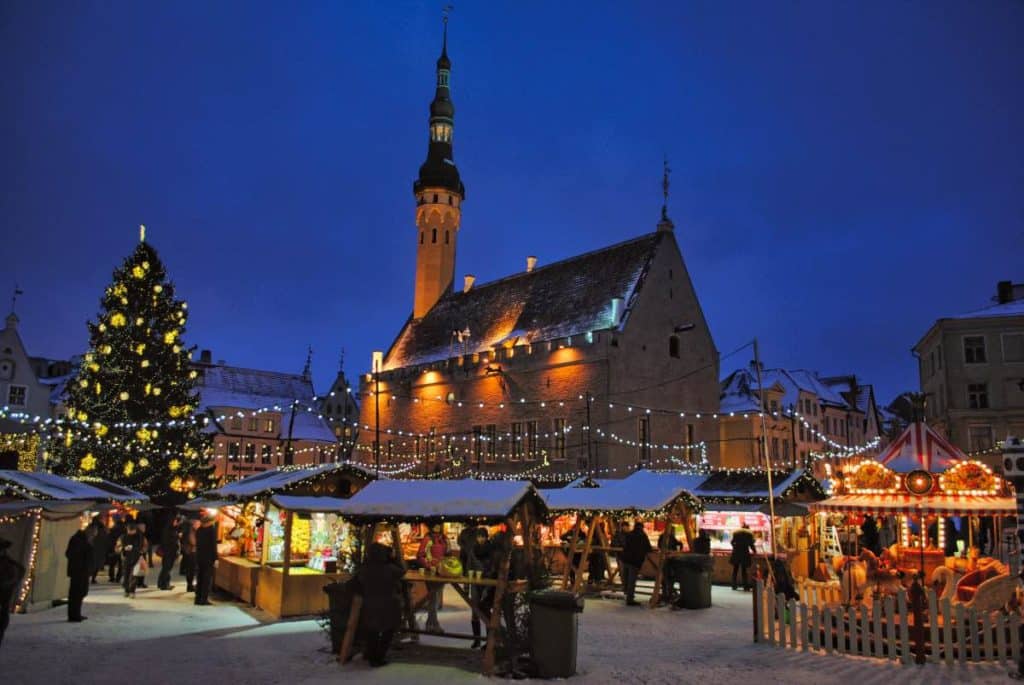
Town Hall Square
It is the most important landmark of the city and the postcard motif for Tallinn par excellence: Town Hall Square with the Town Hall. Like the city itself, the Town Hall Square has had many names in its history. Thus, it also bore the name German Market, when a large number of German-speaking inhabitants lived here, or the name Swedish Market.
All photos were kindly provided by our co-author Thorsten Altheide.
Not only the markets took place on the town hall square. Offenders were also put in the pillory here, which was not dismantled until 1816. Its old location is even marked to this day. Every winter the Tallinn Christmas market decorates the square. Here you can then eat mulled wine and local specialties such as black pudding. By the way, the Christmas market in Tallinn’s Town Hall Square runs until well after Christmas and traditionally ends only in January.
Town hall
The town hall with its striking, slender tower is the crown of the town hall square. And indeed, the town hall is unique in its Gothic form from the early 15th century. It is the only one in this style in all of Northern Europe. The eight round arches on the first floor with the ambulatory also characterize the image of the building. By the way, the 64 meters high tower is crowned by the most famous weathervane in Estonia. Old Thomas (Vana Toomas) has been enthroned there since 1530 and is considered the city’s unofficial mascot.
Old Pharmacy
The Council Pharmacy located on the Town Hall Square is also one of the real Tallinn sights. The pharmacy has been in operation since the 15th century and is still working today. On the first floor you can still buy medicines or just have a look at the medieval interior.
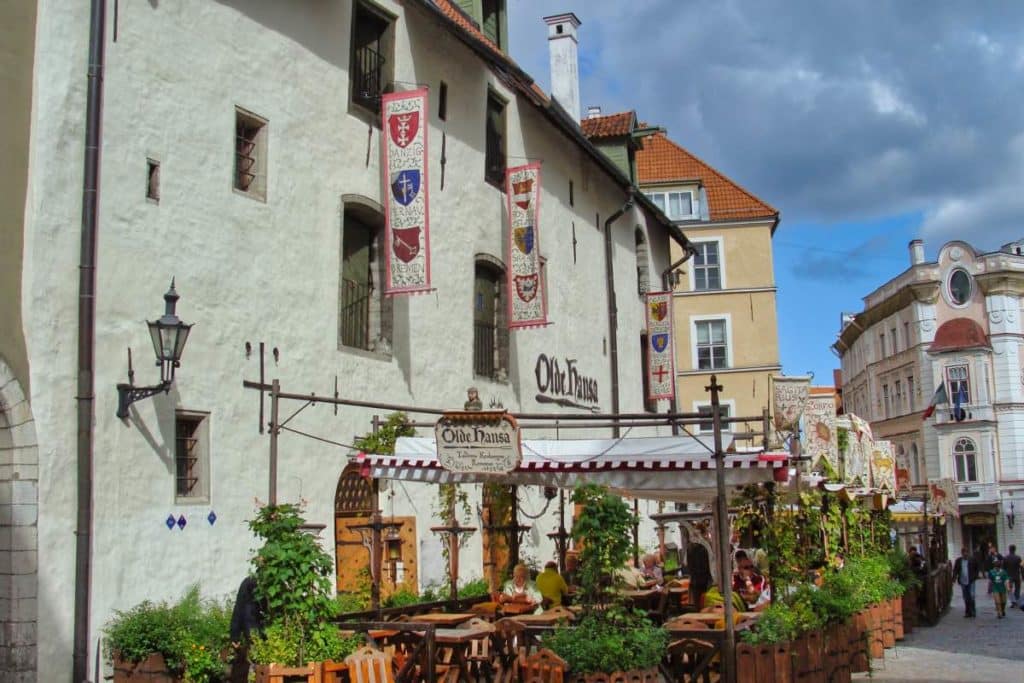
Old Market with Olde Hansa Restaurant
At the Old Market is the Packing House, which was once a warehouse for, among other things, goods and merchandise from abroad. Today it houses a quaint restaurant. At Olde Hansa you can take a trip back in time to the years of the Hanseatic League. All waiters and staff are dressed in period clothing, dishes and other things in the restaurant look like from the 15th century. Old recipes have also been used for the dishes, which do not include potatoes, for example, as they came to Europe much later. Oddly enough, though, they do speak English at Olde Hansa. Reciting Shakespeare, however, is undesirable here. After all, he became famous only in the late 16th century 🙂
Saiakang and Church of the Holy Spirit
The Saiakang is a small, cozy alley through which tourists throng in droves during the summer months. No wonder, because it connects the Rathausplatz with the Langstraße. Dozens of restaurants, cafes and small shops with all kinds of handicrafts and bric-a-brac await your visit. The house with the number 4 is also the smallest house in Tallinn.
At the end of the Saiakang stands the Church of the Holy Spirit, which, like the town hall, also dates from the Gothic period. It also has a slender tower, but it dates back to the 17th century. The Church of the Holy Spirit is also of great importance for Estonians, because the first sermons in Estonian language were held here. On the outer facade you can also see the oldest clock in the city. It has been showing the time to the people of Reval since 1684.
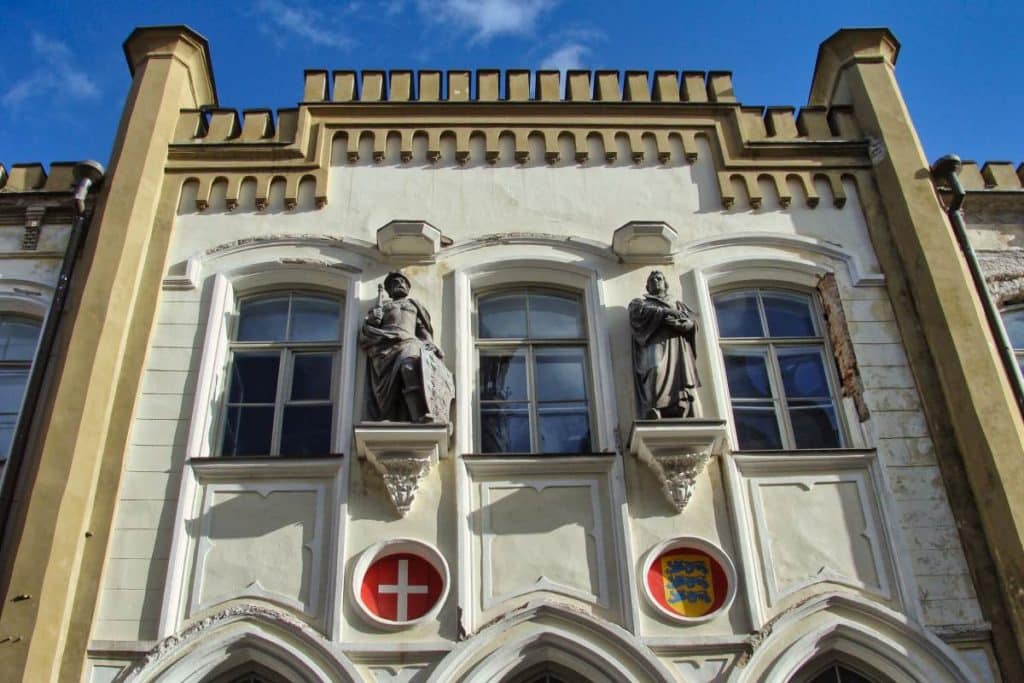
Pikk tänav with guild houses
Pikk tänav was something like Tallinn’s main street in the Middle Ages, as it connected the harbor with the warehouses at the Old Market. Long Street is lined with a whole row of guild houses. These brotherhoods were important societies in the city and financed many building projects. They consisted of influential merchants, for example. The most famous guild was the Great Guild, whose building (Langstraße 17) is now part of the City Museum. To become a member of the Great Guild, one had to be a merchant or goldsmith and married.
Unmarried merchants, also from abroad, first joined the Blackheads, whose guild house today bears the house number 26. One or the other Baltic traveler probably knows the magnificent Blackheads’ House from Riga. In Tallinn, the house is far less imposing. By the way, the guild got its name from its patron saint, St. Mauritius, who probably came from Africa.
Pikk tänav also bears witness to the eventful history of the city. On the one hand, there is a small Russian Orthodox chapel that dates back to the time of the tsars. It was desecrated in Soviet times and serves as a telephone booth. In the building with the house number 59 once resided the hated Soviet secret service KGB. A visit to number 17, on the other hand, is somewhat more enjoyable, as the oldest café in Tallinn, called Café Maiasmokk, serves delicious cakes and traditional Revaler marzipan.
Katariina käik
Filmmakers know what they have in Tallinn. Because the Old Town, which is a Unesco World Heritage Site, offers perfect conditions for them to shoot medieval films. The Katariina käik with the crossbars spanning the alley is therefore also perfect for such shoots. Therefore, the alley should not be missing on a plan for the most beautiful Tallinn sights.
St. Olaf’s Church
The St. Olaf’s Church is often mistaken for the cathedral by unsuspecting tourists. It was the same for me during my first visit in 2007. But it is not entirely surprising, because with 124 meters the tower is the highest church tower in the city and towers over the cathedral by far. In fact, it is so high that the Soviet secret service KGB used it as a radio and observation tower. It was built so high because the citizens of the city wanted to show sailors the direction to Tallinn.
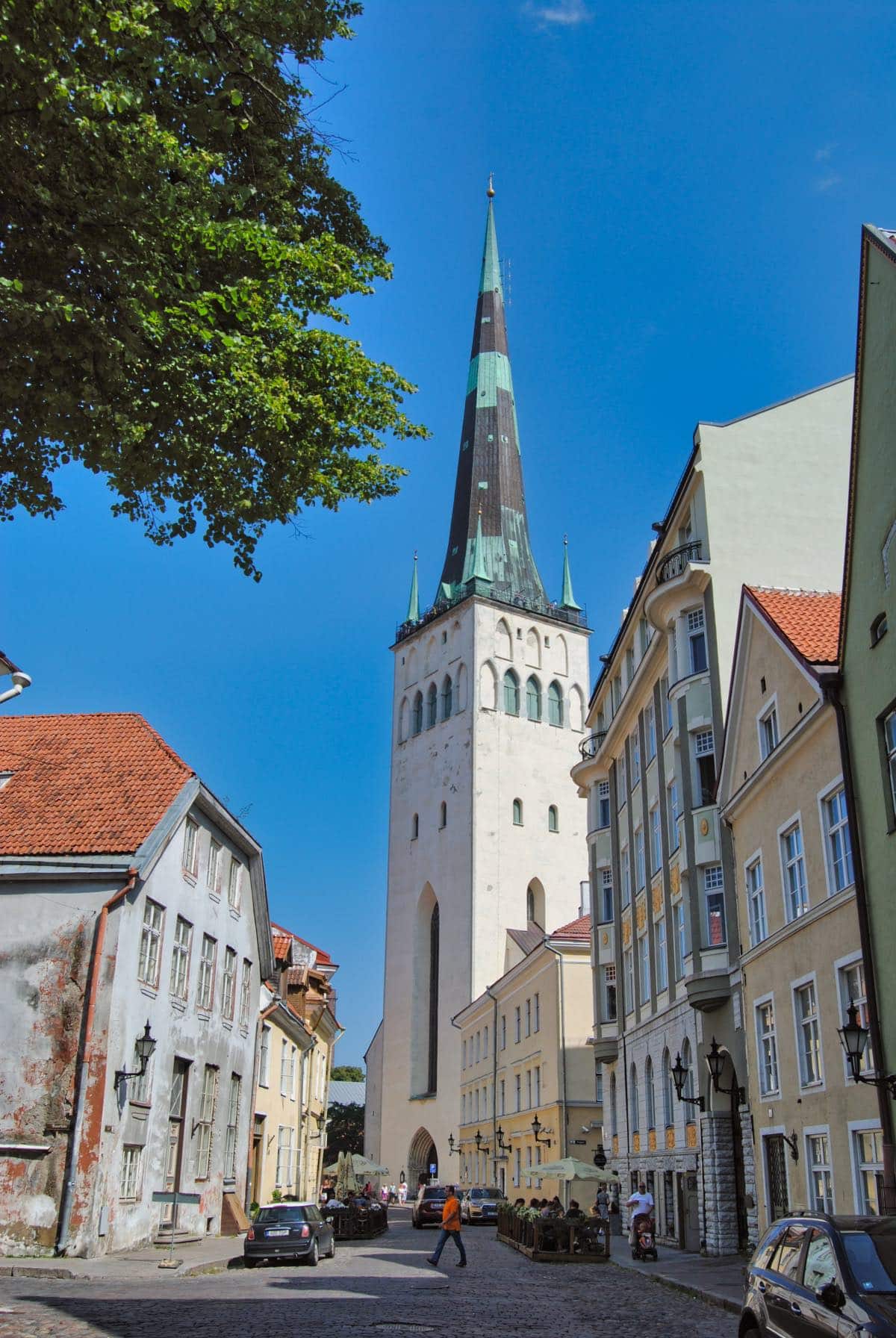
However, this also had negative effects, because 10 lightning strikes are known and three times the church burned down. By the way, the church is named after the Norwegian King Olav II Haraldsson. He is considered the protector of the sailors. However, this seems to have benefited the sailors more than the church itself.
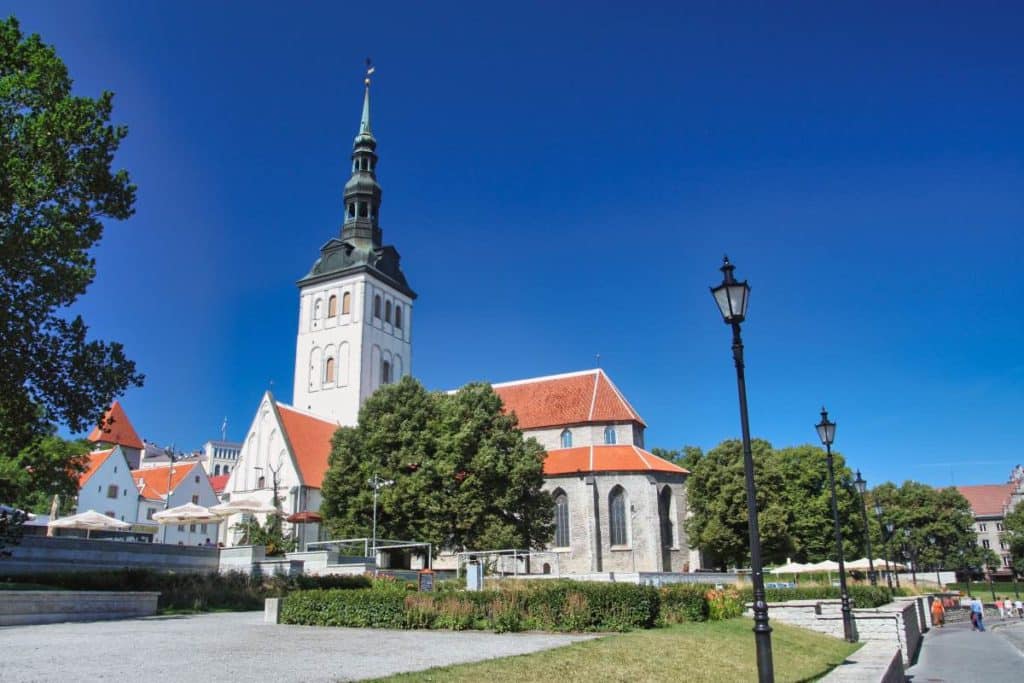
St. Nicholas Church and Danse Macabre
But let’s get back to the churches that you might think are the cathedral. The Church of St. Nicholas would also qualify as a magnificent cathedral, since it is located right at the foot of the Cathedral Hill. At 105 meters, its tower is also significantly higher than that of the cathedral. By the way, it was built by merchants from Westphalia. It is dedicated to St. Nicholas, who not only distributes gifts to good children, but also serves as the patron saint of merchants, fishermen and sailors.
The most important work of art in the city is also exhibited here. The Tallinn Danse Macabre or Dance of Death by Bernt Notke. Once the work was 30 meters long. Today, however, barely a quarter has been preserved. It symbolizes the influence that death has on life as well.
Big Beach Gate with the Fat Margaret and Maritime Museum
The Tallinn city wall was built in 1265 by order of the Danish Queen Margarete. The people of Tallinn thanked her in a not exactly charming way by naming one of the towers “Fat Margaret”. And if you’ve ever heard the unkind phrase “It’s as high as it is wide,” you’re in for a surprise, because the fat queen is actually wider (24 meters) than she is tall (20 meters).
After all, however, the Danish queen in stone has proven to be very defensible. No wonder, though, because the walls are up to five meters thick. Nevertheless, there is enough space inside to display the history of Estonian seafaring in the Maritime Museum. On several floors you can see navigation equipment, diving suits and sailor’s yarn. On the roof you can enjoy the view with a cup of coffee.
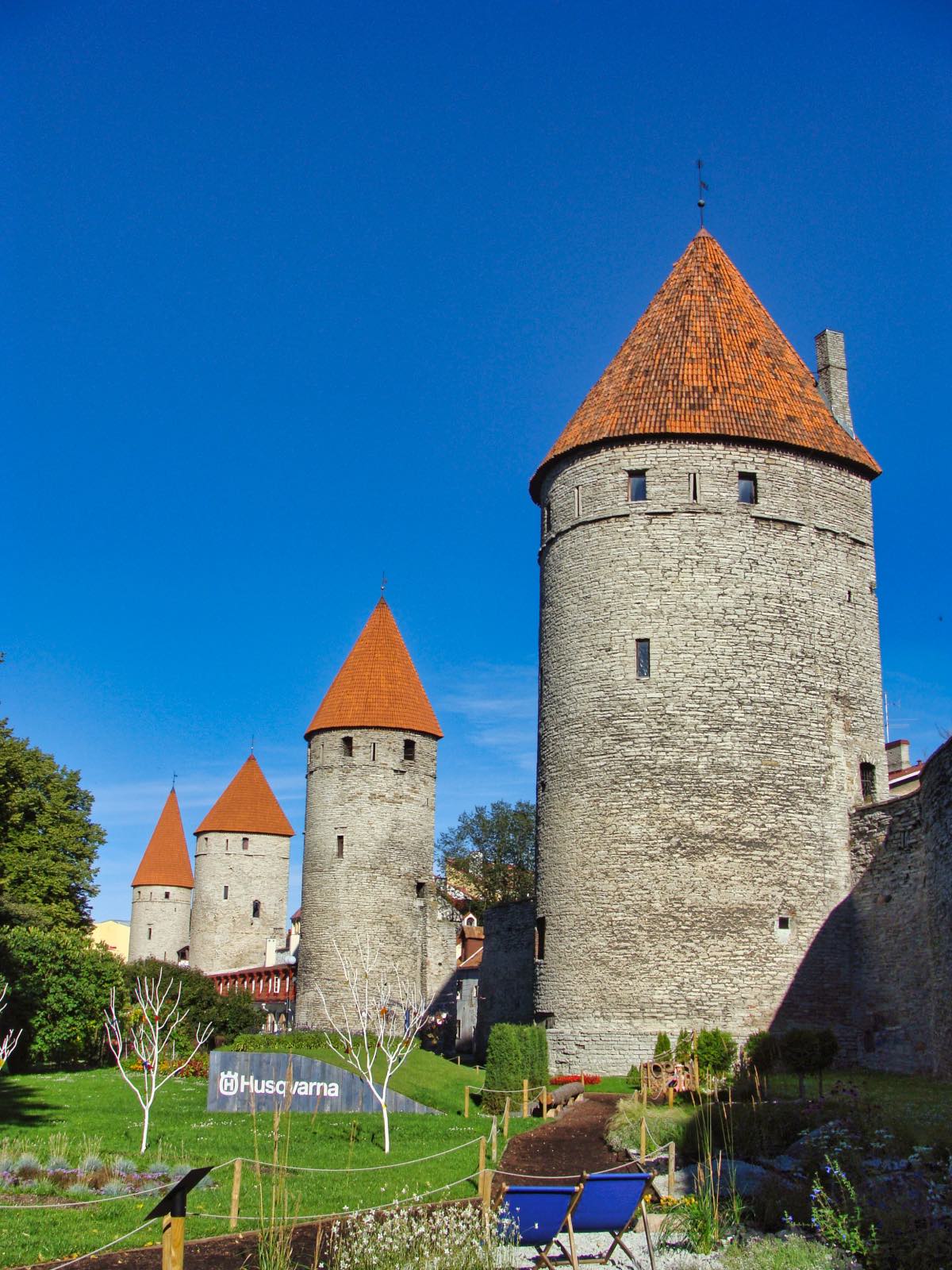
City Wall and the Square of Towers
However, the Fat Margeret is only a part of the city wall. It connects directly to the Great Beach Gate, which was the capital gate that granted access to travelers coming across the Baltic Sea. Overall, there are still quite a few remnants of the city wall in Tallinn. It is also nice to walk along the Wall Street, where you will realize the dimension of this protective structure. From Towers Square you can see seven towers of the city wall. But this is only a fraction of the number of towers that used to stand in Reval. Some sources claim that once there were up to 60 towers of the city wall in Tallinn.
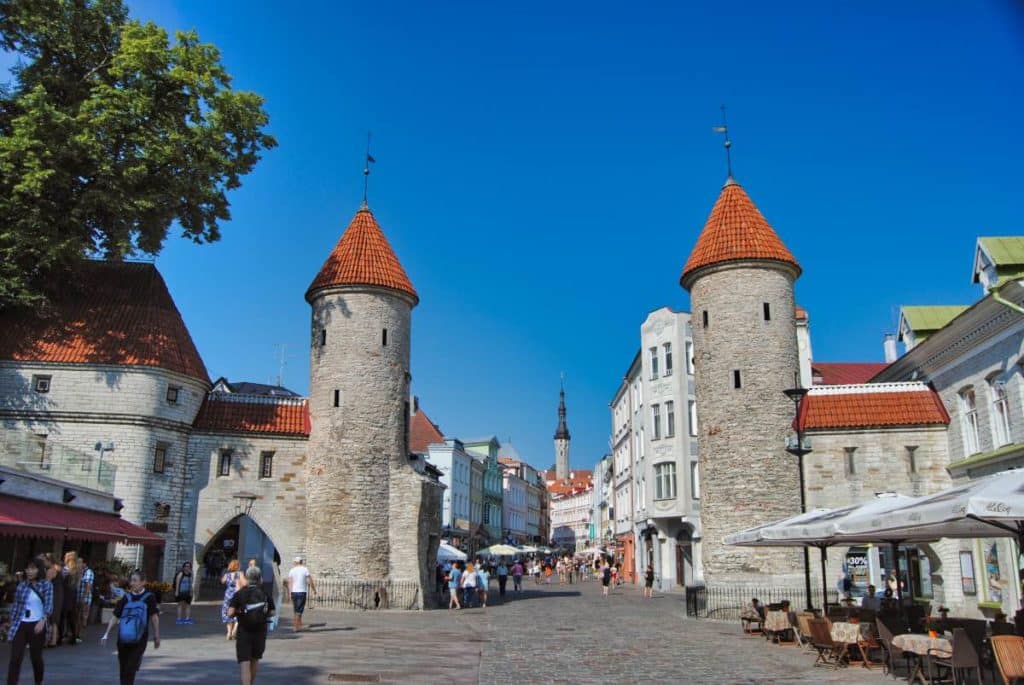
Viru Tänav and Viru Gate
Viru Tänav is the main shopping street in the old town of Talllin. A whole range of stores, boutiques, restaurants and nightclubs await your visit here. It also crosses the Viru Gate, which is another city gate of the old city wall.
Cathedral Hill
Old Reval is divided into the Upper and Lower Town. The Upper Town is situated on a limestone mountain, also called Cathedral Hill (Estonian: Toompea). According to legend, this is where the grave of the Estonian national hero Kalev is buried. Cathedral Hill rises about 30 meters above the lower town and its buildings are therefore clearly visible from everywhere. There are countless vantage points from which you can take beautiful photos of the city. The most important institutions of the country are gathered here, such as the parliament and the seat of government. Over the centuries, the Cathedral Hill was also used by the respective rulers of Estonia, which is also reflected in the architecture.
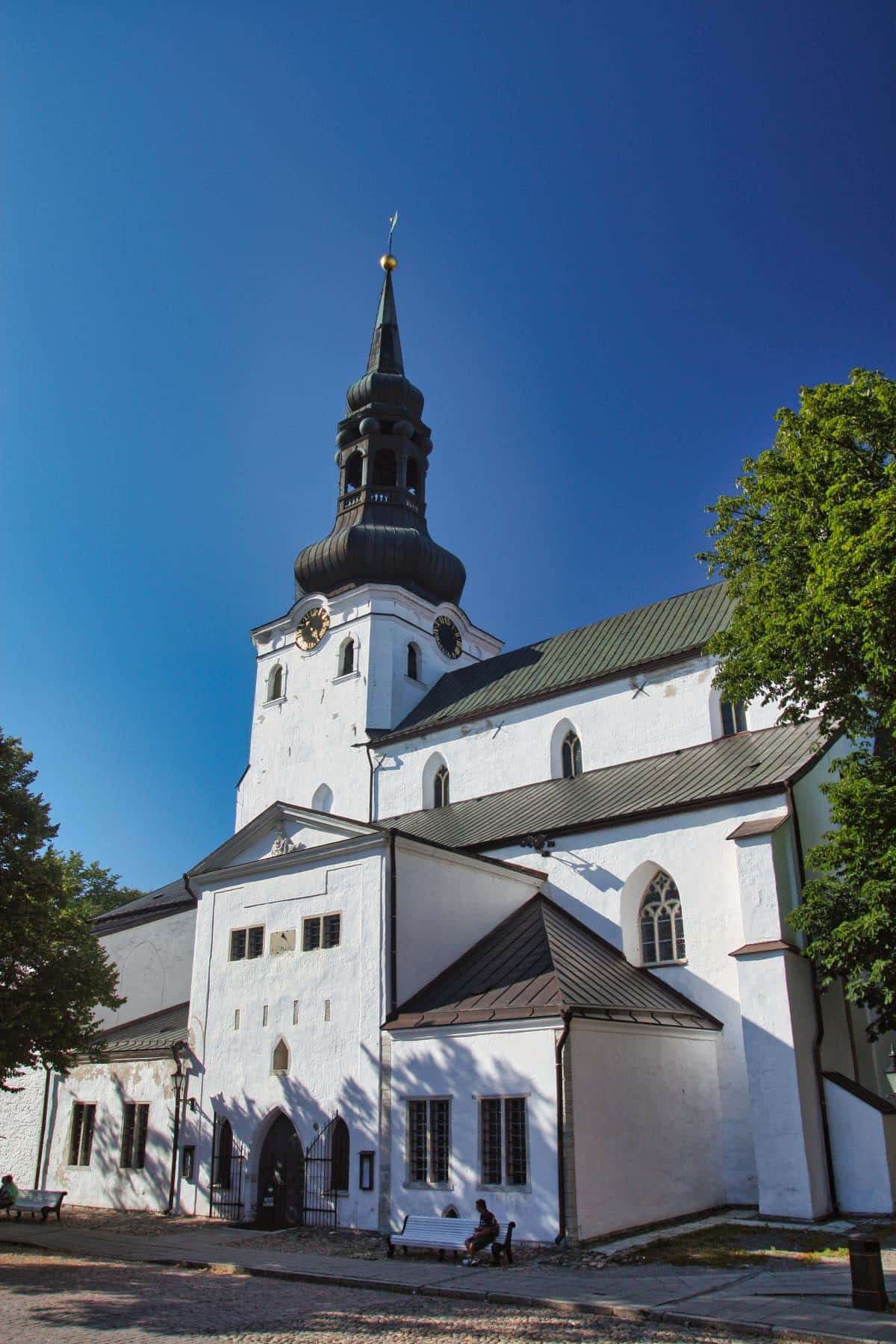
Tallinn Cathedral
Tallinn Cathedral was built by the Danes as early as the 13th century and is the oldest surviving church in the city. It is the most important church in the country and the episcopal church of the Archbishop of the Estonian Evangelical Lutheran Church. For such an important church, the interiors seem comparatively plain. However, due to the Reformation and a fire that raged on Cathedral Hill in 1684, the interior was largely destroyed. At the beginning of the 20th century, a Ladegast-Sauer organ was installed here, which still sounds incomparable today. So if you have the opportunity, you should visit an organ concert here.
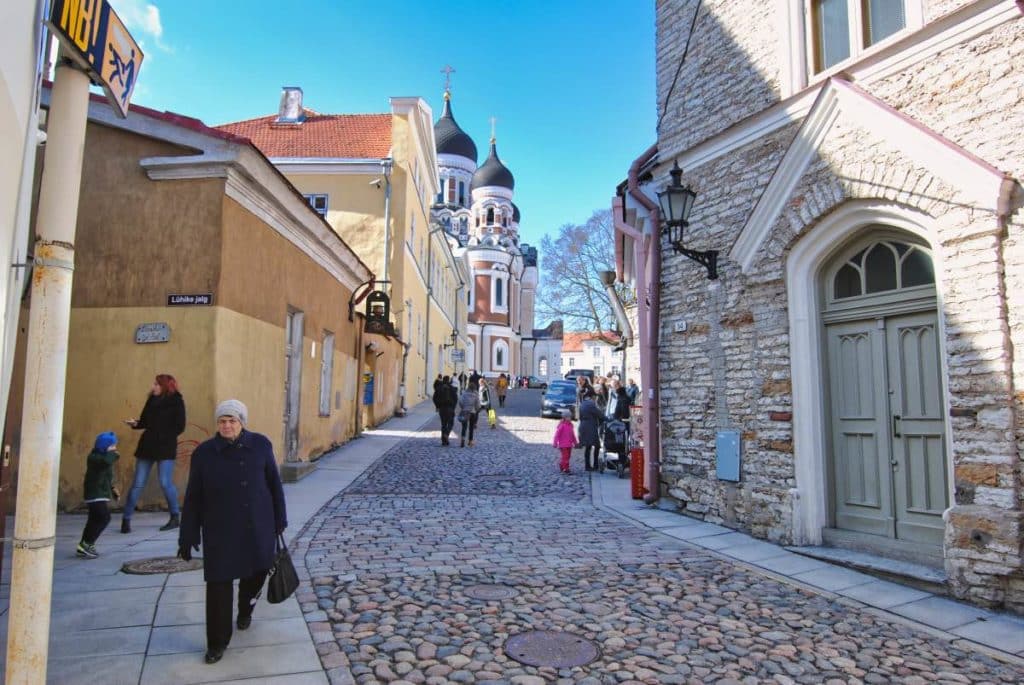
Pikk jalg and Lühike jalg
Since the Upper and Lower Towns were separated until well into the 19th century, there were also only two connecting roads between the two places. The respective city gates were locked at night, so that one could not move between the cities when they were closed. The short Lühike jalg was intended only as a pedestrian path. The longer Pikk jalg, on the other hand, was used by carts even then. There were even guards here who directed the traffic above and below.
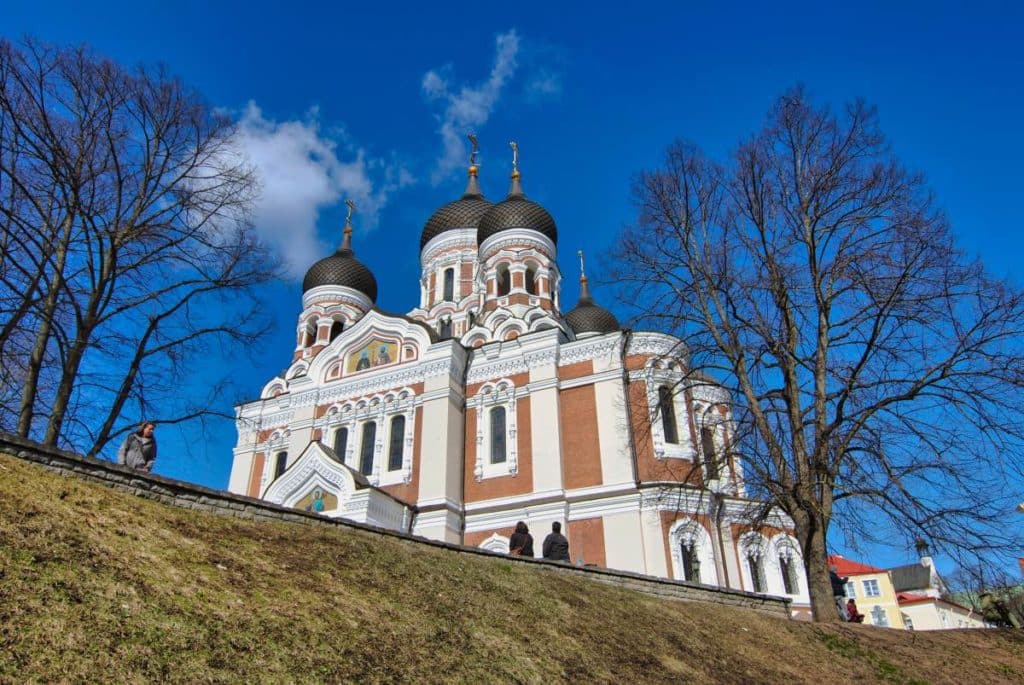
Alexander Nevsky Cathedral
With the architecture of a typical Russian Orthodox church, the Alexander Nevsky Cathedral does not quite want to fit into the image of Cathedral Hill. Consecrated in 1900, where a Luther monument was supposed to stand, it is hated by many Estonians to this day. The cathedral was built during the tsarist empire and is for them a symbol of the oppression of the country by the Russians. In 1924 it was even supposed to be demolished because of this, but it still stands today. It is the most magnificent Orthodox church in Estonia, with five onion domes and a gilded iconostasis. Here you will probably actually feel as if you were staying a few hundred kilometers further east.
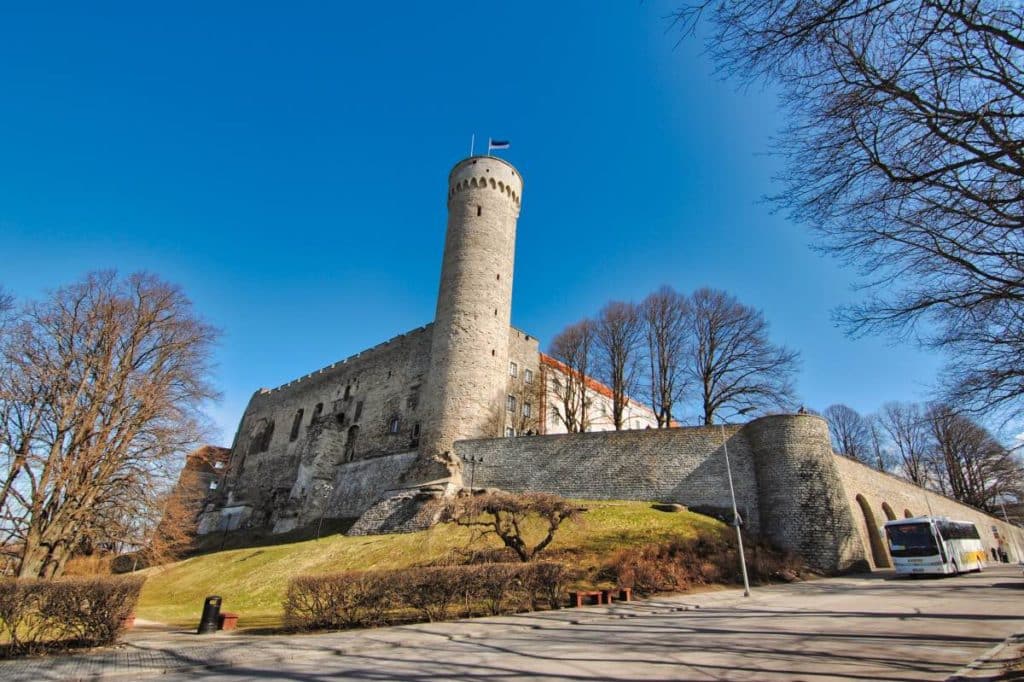
Tallinn Castle
Früher wurde die alte Ordensburg noch standesgemäß auf Lateinisch bezeichnet und hieß Castrum Danorum, also Dänische Burg. Dieser Begriff soll sich danach auch für die Stadt durchgesetzt haben. Einige Historiker vermuten, dass der Name dann auch für die estnische Übersetzung des Ortes diente und sie deswegen Tallinn heißt. Die Dänen hatten die Burg bereits im 13. Jahrhundert gegründet, auch wenn es vorher schon Holzburgen der Esten an hiesiger Stelle gab.
Pikk Hermann
The magnificent castle with its meter-thick walls and the castle tower, the Pikk Hermann, the Long Hermann, which is visible from afar and was once one of the corner towers of the castle, is also considered a Tallinn landmark. 215 steps lead up to the tower, from which you have a great view of the Upper and Lower Town. Every morning, the Estonian flag is hoisted here and taken down again in the evening. The national anthem is played in the morning and other popular Estonian songs in the evening.
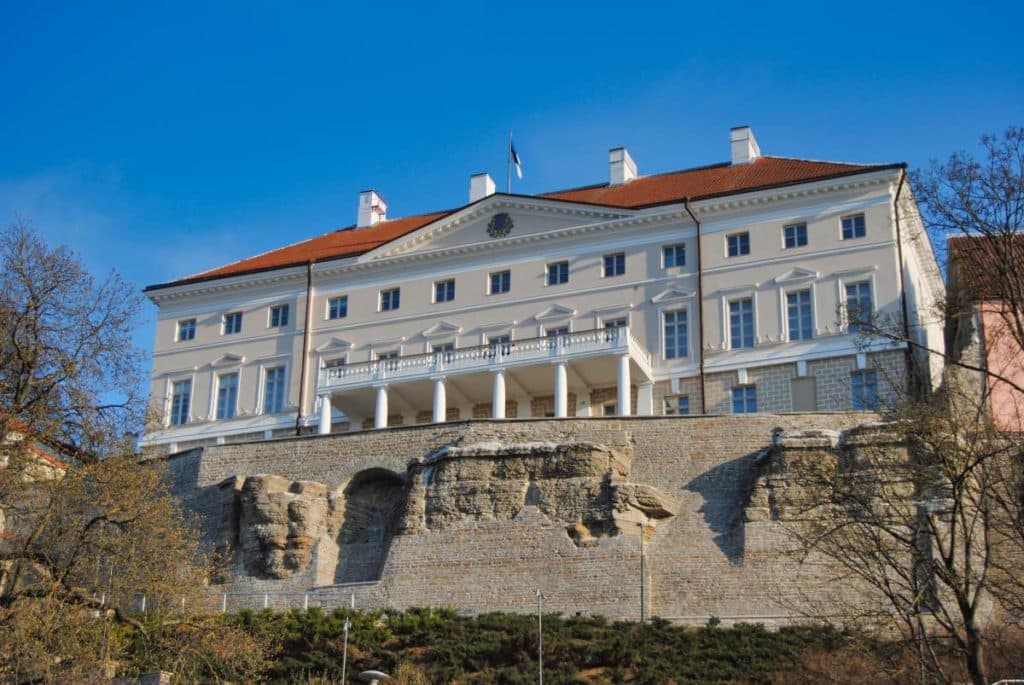
Estonian Parliament and Government on Cathedral Hill
Today, the Riigikogu, the Parliament of the Republic of Estonia, has its seat in the Castle. 101 parliamentarians determine the fate of the small republic in the northeast of the EU. The government, on the other hand, also sits on Cathedral Hill, but in the so-called Stenbock House. Some of the most important embassies in Estonia are also located on Cathedral Hill, including the German embassy, for example.
Garden of the Danish King
A beautiful place to simply spend some time in the greenery is the garden of the Danish king. It is here, in fact, where, according to legend, was revealed to the Danes their flag, the Dannebrog. This is how the Danes are said to have been exhausted during the conquest of Domberg. But then the sky opened up and a red flag with a white cross fell down. Now Waldemar II and his men rode to victory. Whether it is true or not, here it is also remembered what the Danes contributed to the development of the city.

Freedom Square
Estonia regained its independence on August 20, 1991. It had been occupied since 1940. Before that, during the first phase of independence, Freedom Square was already once called Freedom Square. That is why today a victory column commemorates the fighters for Estonian independence of that time. Today, however, the square is used more for concerts, after all, it is one of the largest open spaces in Tallinn.
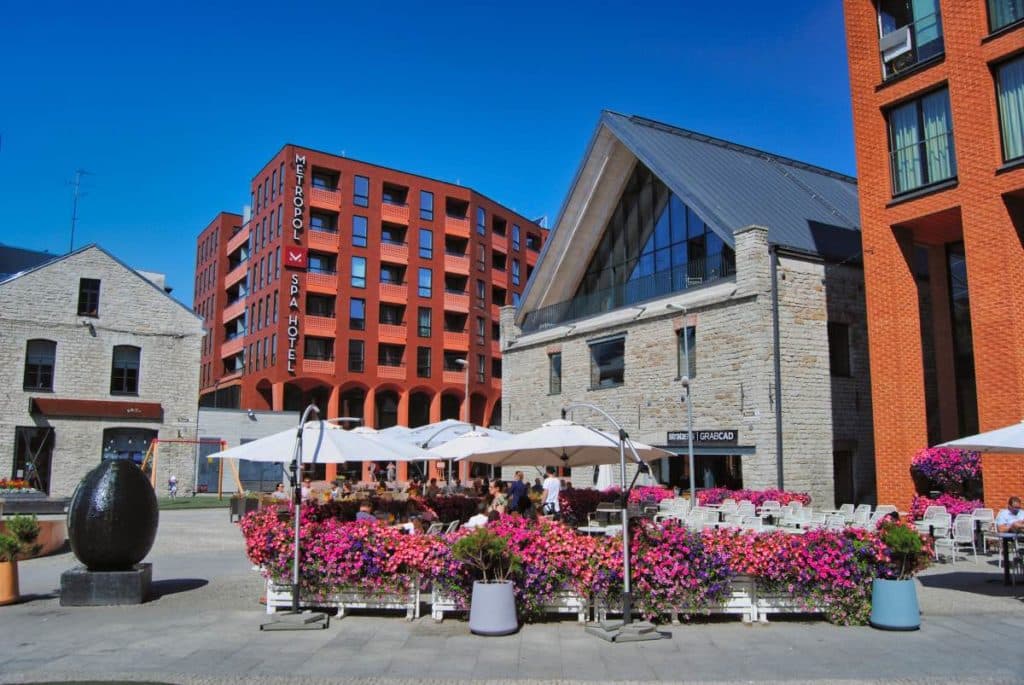
Rotermann Quarter
When I first came to the Rotermann Quarter, almost everything here was still under construction. A friend from Tallinn had bought an apartment here and even the elevator was still covered with cardboard and we promptly got stuck with it, too. At that time, it was not yet foreseeable that the Rotermann district would soon become a creative hotspot. Here, old industrial architecture meets modern design and hip cultural projects. In the meantime, the district with its cafés has become a popular meeting place and you should also put it on your list of Tallinn sights.
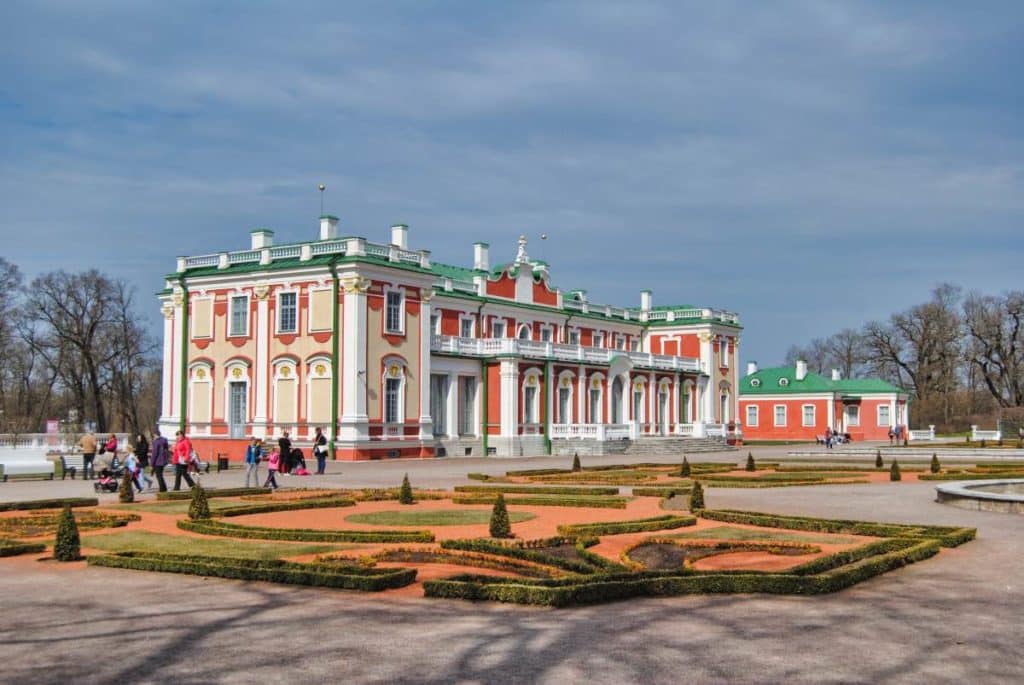
Kadriorg with park and Kardriorg Castle
For a long time, Sweden was the great power around the Baltic Sea. However, this changed at the beginning of the 18th century under Peter the Great. In 1710, Russia conquered Estonia and Peter had a castle with a park built for his wife Catherine I. Kadriorg itself became popular mainly as a seaside resort in the 19th century and was a favorite residence of the Romanov family. Today, the Estonian president is based in the castle’s administrative building. Foreign art is displayed in the castle itself. In another building there is an exhibition about Tsar Peter I.
KUMU
On the grounds of the castle park you will find KUMU, short for Kunstimuuseum. It is the largest art museum in Estonia and even one of the largest in Northern Europe. Estonian and Baltic artworks from the 18th century to the present day are displayed here. Art from the time of the Soviet occupation is also included, and you can see both Socialist Realist art and underground art.
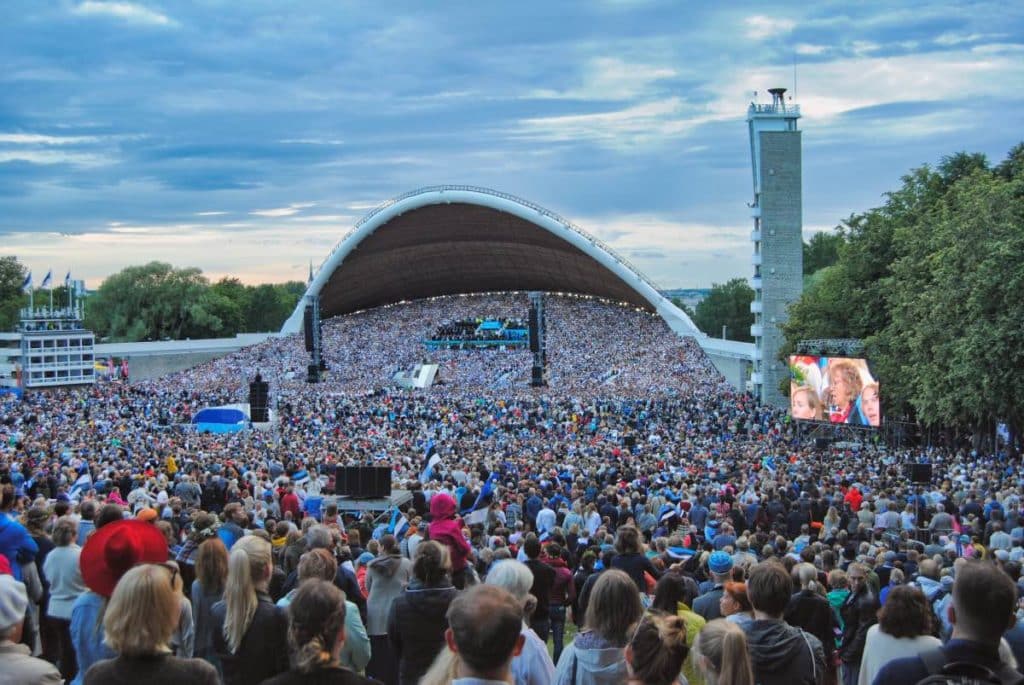
Singing Festival Site
In Soviet times, Estonians were forbidden to sing songs that commemorated the independence of the Baltic states. For this reason alone, it was a revolutionary act to sing such songs at that time. From 1987 onwards, the independence aspirations became more and more prevalent and many Estonians gathered for singing festivals. In 1988, at a demonstration on Lauluväljak, more than 300,000 Estonians sang the Estonian national anthem together, which was a great gesture for independence.
That’s why the Singing Festival Square is still the meeting place for the big Singing Festival, which takes place every five years. 25,000 singers present themselves here in front of around 100,000 spectators. The stage of the Singing Festival Square was built as early as 1959 and is an example of Estonian modernist architecture. On the other hand, you have a beautiful view of the area from the 42 meter high lighthouse.
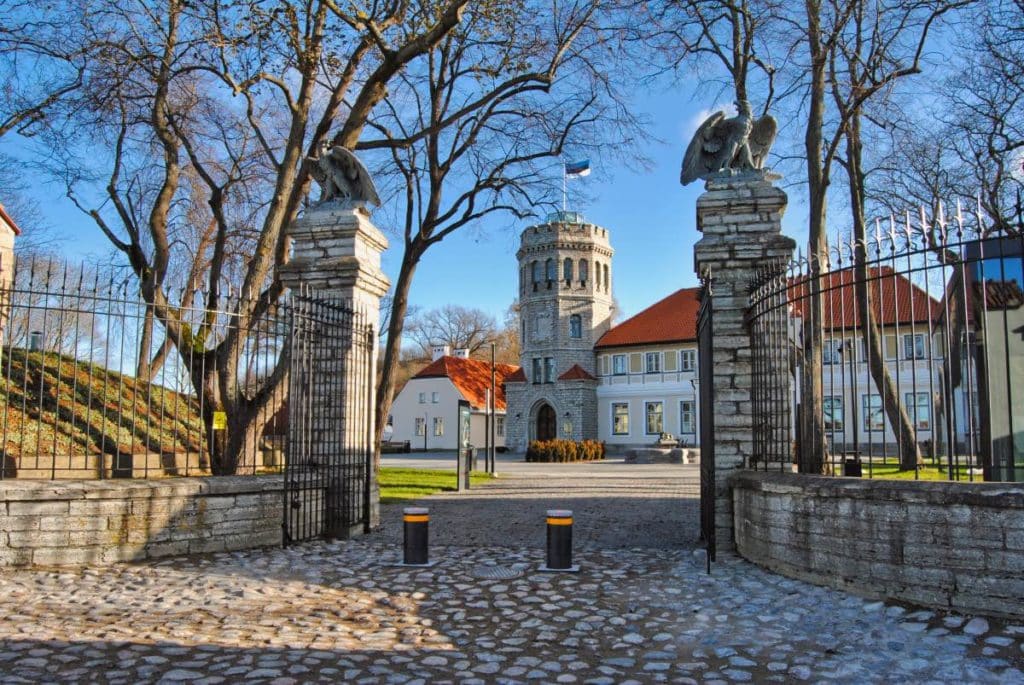
Maarjamäe History Museum
Maarjamäe Castle has had an eventful history, full of stark breaks. It was built for a family of counts from St. Petersburg during the tsarist era. After the October Revolution, the Orlov family fled to France. The building initially housed the Dutch ambassador to the Republic of Estonia until it became a hotel. In 1937 the Estonian Air Force acquired the building. The reconstruction works were hardly over when the Soviet Union occupied Estonia and the Red Army occupied the castle.

Later, even ordinary citizens lived here in so-called Kommunalkas, Soviet communal apartments. In 1975, the Soviet of the Estonian SSR wanted to establish a museum here for the “glorious” history of the Estonian SSR. But the renovation took too long and by the time of the planned opening, the Soviet Union had almost vanished into thin air. So it was that the Estonian History Museum eventually moved in here after independence, telling the country’s turbulent history. In the garden of the castle there is also the “Cemetery of Monuments” where Estonians artfully store the statues of the hated Soviet occupation.
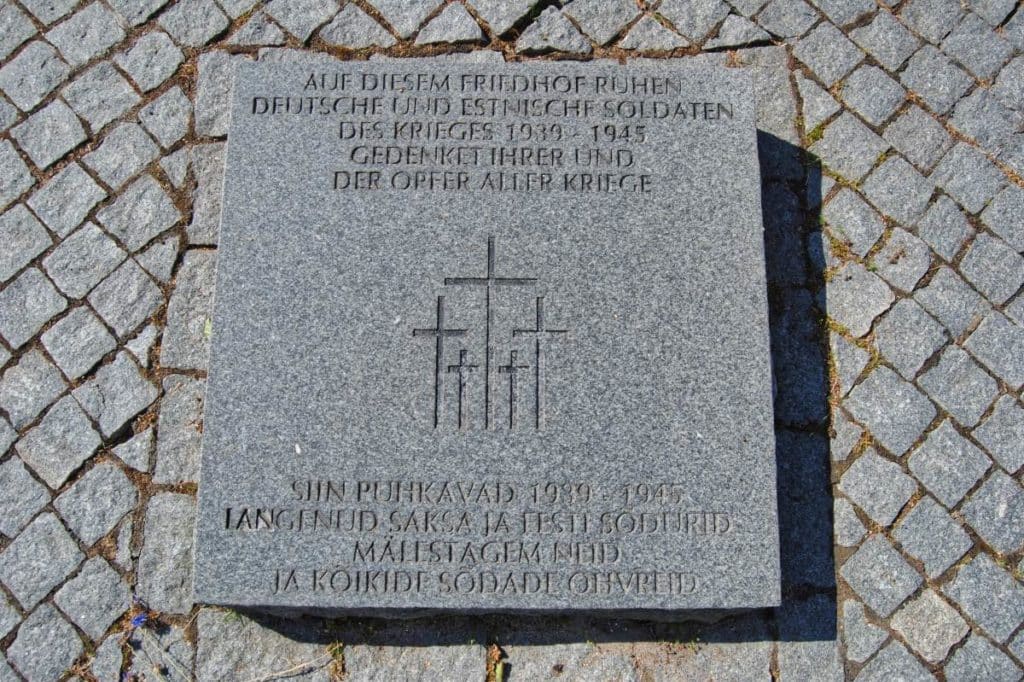
Mile of Memorials
Around Maarjamäe Castle there are also several memorials commemorating the victims of war and tyranny. A cemetery for German soldiers was established here as early as 1941. The Soviets had it leveled after the war and it was not until 1998 that it was redesigned by the German War Graves Commission. Here lie buried the soldiers of the Wehrmacht and SS who fell after the invasion of the territories occupied by the Soviet Union in 1940.
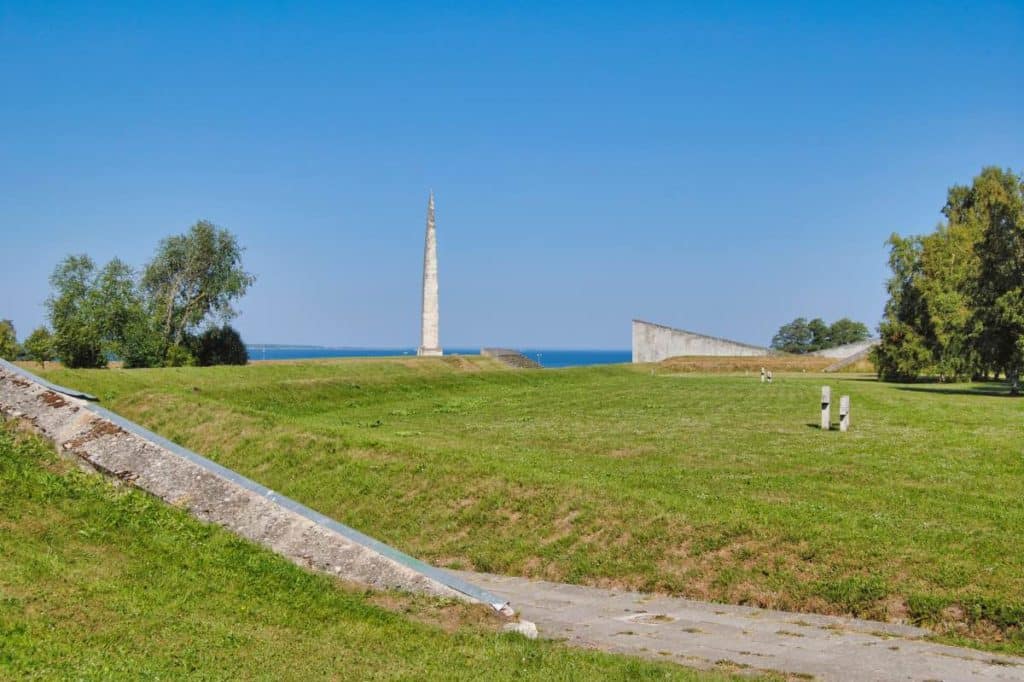
In the immediate vicinity, the Soviet authorities had the largest memorial complex in Estonia built in the 1950s, commemorating the fallen Soviet soldiers of World War II. The complex, with a 35-meter-high obelisk, is meant to commemorate those who fought for the “freedom of Estonia.” For most Estonians, this claim alone is a real mockery. That is why they have a hard time with this granite heritage. The complex is decaying more and more.

Instead, in 2018 a new monument to the victims of communism was built. Here, in turn, those who were murdered by the Soviets in the fight for genuine independence of Estonia are remembered. A full 22,000 names are recorded here. The most famous victims are the officers and the intelligentsia, who were shot by the Soviets by the thousands already in 1940 after the occupation.
Brigitte Monastery in Pirita
In addition to the large sandy beach, which attracts mostly bathing Estonians to Pirita in the summer, the remains of the former St. Brigitte’s Monastery still stand here. It was once one of the largest monasteries in the region. Although it was destroyed in the 16th century, its remains still have a magical effect on visitors today. Especially the walls of the former nave give an impression of the greatness of this former convent. In 2001 it was also re-founded and today up to ten nuns live in the newly constructed buildings.
Teletorn (TV Tower)
Another monumental work of communism also stands in Pirita. The Tallinn TV Tower was intended to serve as a communications center for the competitions held in Estonia at the 1980 Moscow Olympics and was therefore hastily opened in July. This almost went wrong, because shortly before the opening there was a fire in the tower in April 1980. Fortunately, a foreman was able to prevent worse, so that today you can enjoy the view from the 170 meter high platform. In good weather, you can even see the Finnish coast from here. At 313 meters, the tower is still the tallest building in Estonia.
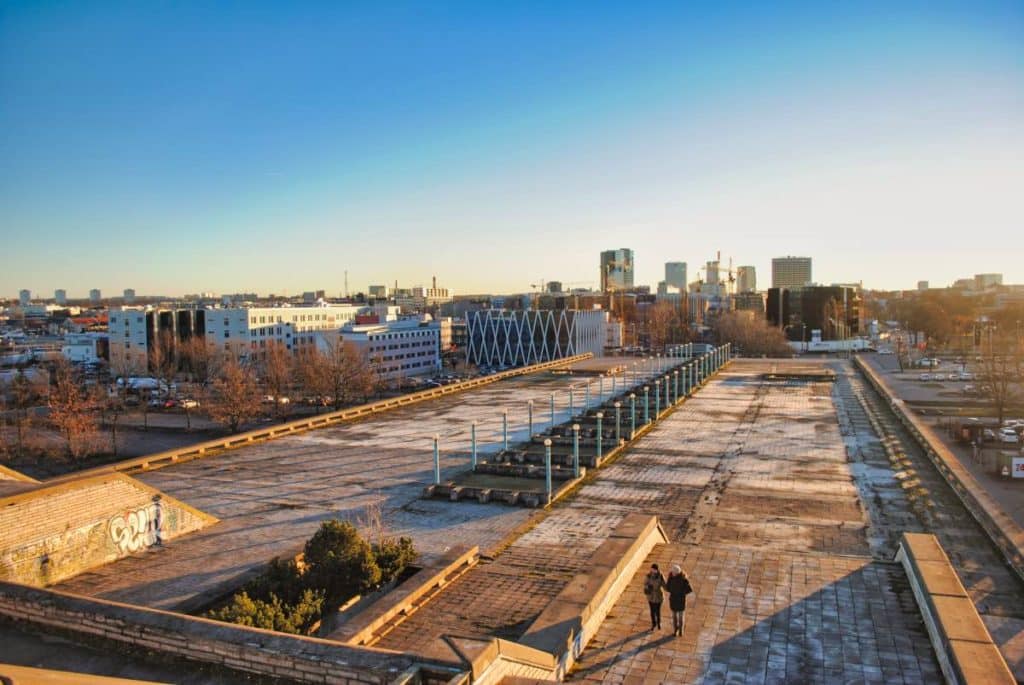
Linnahall
And while we are on the subject of Soviet buildings: Probably the most brutalist building in the city also still stands today, but is falling into disrepair just like the Soviet Memorial: the Linnahall. The Tallinn City Hall was also opened for the 1980 Olympics, but then under the name Vladimir Ilyich Lenin Palace of Culture and Sports. The largest hall in Estonia until 2001 with 5000 seats is now in a deplorable condition, but still enjoys great popularity among fans of Brutalism. And indeed, there is an initiative to save the Linnahall.
Kalamaja
In Soviet times, Kalamaja was sealed off from the outside world as a border area. Today, hipsters in particular flock to the former industrial district. In the market at the Baltic Railway Station, you can store in more than 300 stores for all kinds of creative products – many of which were produced in Estonia. In the harbor you will find the second part of the Estonian maritime museum Lennusadam. Here you’ll also find the former KGB prison Patarei, right on the coast of the Baltic Sea, which the famous Youtuber Bald and Bankrupt recently visited.




Telliskivi Creative Campus with Fotografiska
However, if you want to get the absolute hipster shock in Tallinn, then nothing beats the creative campus Telliskivi. There are 1000 artists, creative agencies and other businesses from the design scene here. There’s a graffiti wall where some of the country’s best graffiti artists immortalize themselves, er short-time. And Fotografiska invites you to visit. The famous photo museum from Stockholm has set up a branch here, along with New York, and there are some of the best photography exhibitions in the world to see.
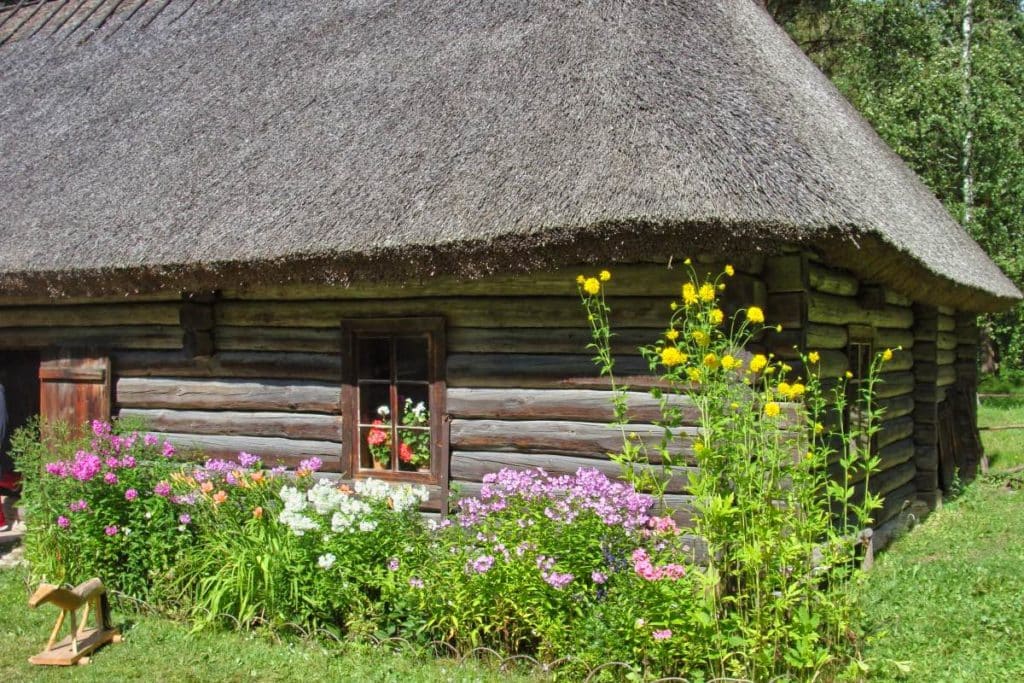
Estonian Open Air Museum Tallinn
The Estonian Open Air Museum in Tallinn displays buildings from the last two centuries. Here you can experience how ordinary Estonians used to live and work in the houses. More than 70 houses have been reconstructed here. You don’t have to be a schoolchild to like the traditional schoolhouse, firehouse, windmill or other typical buildings from Estonian villages. In the restaurant of the open-air museum you can taste Estonian cuisine and during the festival days there are demonstrations and cultural events.
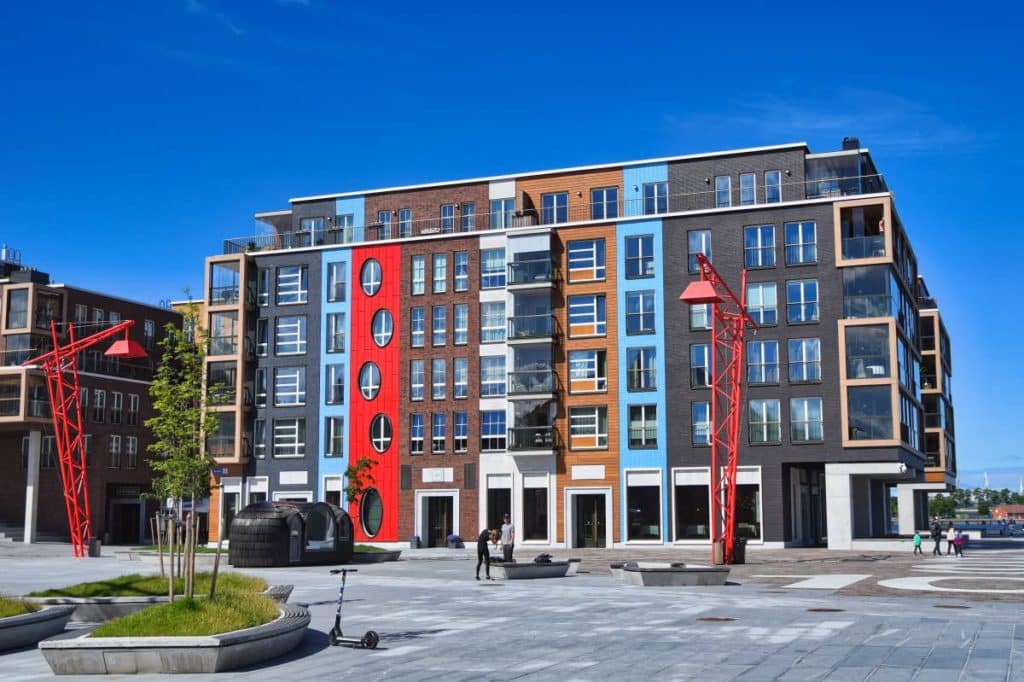
Port Noblessner
And there’s just so much going on in Tallinn, you’d think the Estonians are finally making up for what they missed during 50 years of Soviet occupation. And so there is another newly designed highlight in Tallinn: the Port Noblessner. This is where the Russian Navy’s submarines were built until the First World War. Today, this area also houses art galleries, a yacht club, many restaurants and cafes, and the Club Hall. And in the Port Noblessner district, it is once again evident that Tallinn’s creative potential is virtually inexhaustible and that a visit to this beautiful city belongs on every Baltic visitor’s itinerary.
Excursions
You’ve had enough of the city and want to explore the surroundings? No problem, in this article we have compiled the most beautiful destinations for you!
Tallinn book tips
Tallinn is an amazing city and we think it seriously lacks some good books. But there are a few titles available that are worth to check. For a quick overview check the Top 10 Tallinn from DK publishers which give you a good peak into the city.
- DK Eyewitness (Author)
The Lonely Planet for all Baltic States is a good resource to check not just for Tallinn but all of Estonia, Latvia and Lithuania. Great recommendations and descriptions.
- Kaminski, Anna (Author)
Neil Taylor wrote a short history of this beautiful Baltic country and its people. Very much worth the read and makes you much better understand your trip.
In this book, Estonian-born Finnish author Ilmar Taska deals with the postwar period in Estonia in an unconventional way.
You haven’t had enough yet and want to explore the surroundings of Tallinn? Then just click here to go to our article with the most beautiful destinations.

